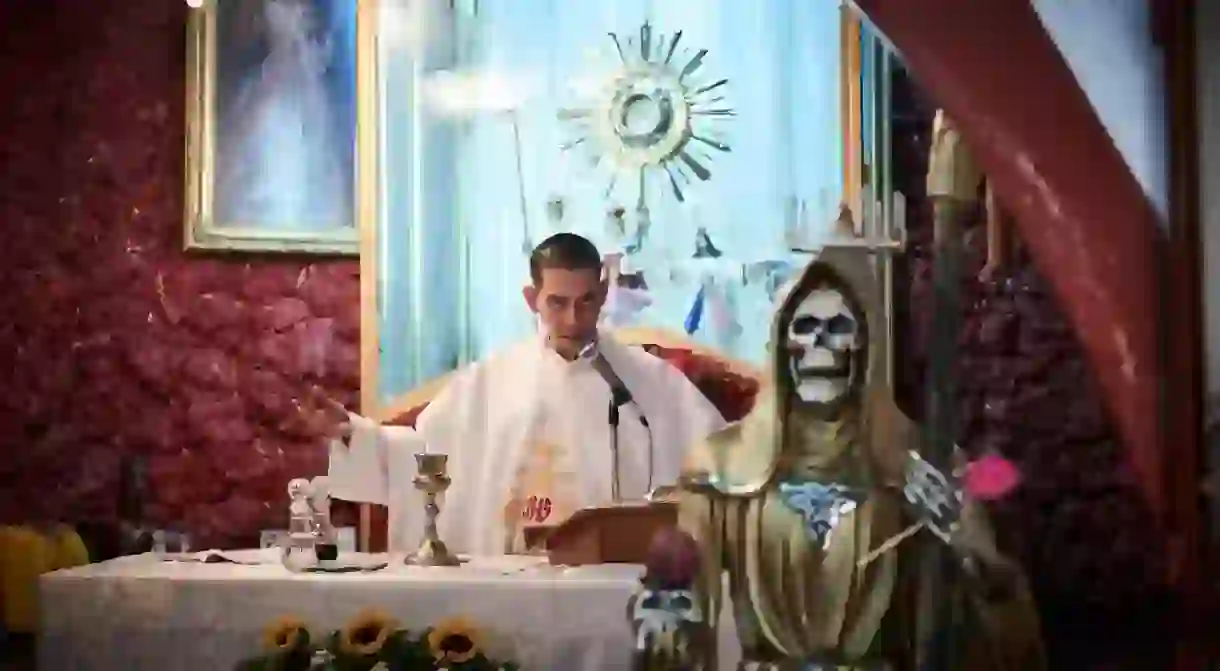Memorable Experiences You Can Only Have in Mexico City

Mexico City’s sheer size calls for mariachi-style enthusiasm, with a foot-stomping selection of activities and attractions – including unique diversions found here and only here. In fact, the New York Times crowned the city a “metropolis that has it all”. We couldn’t agree more. She may be called La Ciudad de los Palacios (the City of Palaces), but she’s certainly no square – especially with our guide to her alternative corners, from the creepy Isla de las Muñecas to the weird Mercado de Sonora.
Looking for a boutique experience? Then book Culture Trip’s five-day Mexico City tour, where you’ll be guided through the best the city has to offer by our Local Insider.
Tour a creepy island
Natural Feature

After Julian’s death in 2001, the island became a tourist attraction, with some visitors claiming to have seen the dolls open their eyes or move their limbs. Creepy much?
Pay for an electric shock
Archaeological site
Explore the house where Leon Trotsky was murdered
Building, Architectural Landmark, Museum
With rooms preserved as they were the day of Trotsky’s death – and a tomb in the garden containing his ashes – the museum now offers an intriguing glimpse into one of the most bizarre moments in 20th-century Mexican history.
Visit the cathedral of Lucha Libre
Cathedral, Stadium

Visit the church of Saint Death
Church, Shrine
Mass is celebrated in the Santuario six days a week, despite the fact that the devotion has been condemned as satanic by the Catholic Church. Baptisms, confirmations, first communions and even weddings are also held here.
Head to the Biblioteca Vasconcelos
Library
Bookworms taking in the sights of the capital should make a stop at the Biblioteca Vasconcelos, next to the Buenavista train station, north of the city center. The “mega library” was inaugurated in 2006 by then-president Vicente Fox Quesada, with 600,000 books classified through the Dewey Decimal System. The architecture – a modern mix of marble, granite, steel and glass by Mexican architect Alberto Kalach – is worth seeking out for its sleek design alone.
Non-bookworms, take note: there’s also a large garden showcasing 60,000 species of trees and shrubs – the perfect inner-city oasis to catch your breath and plot your next move.
Lose yourself in the Chapultepec Forest
Park

Indulge at the Pastelería Ideal
Shop
Bear with us – this is no ordinary cake shop. In fact, the Pastelería Ideal is one of the most well-known shops in the capital, famous for its exhibitions of all things sweet. Founded in 1927, the bakery entices curious visitors with their lavish collection of pastries, jellies, breads and savory treats. What makes this bakery memorable? The icing on the cake is the remarkable cake exhibition, with hundreds of extravagant, multi-tiered exhibits on display. Plus on the way out, you can pick up boxes of conchas (a traditional Mexican sweet-bread roll) and pan danés (fruit-filled danishes) to refuel on while sauntering through the city.
Wander through the Mercado de Sonora
Market
Obligatory for those with an inquisitive nature and a taste for the occult, the Mercado de Sonora is a huge market in the Merced Balbuena neighborhood. Ditch a traditional shopping list and pore over some of the strangest items on offer in the capital. Obscurity is the name of the game here, so the locals don’t bat an eyelid when bartering for love potions, magic soaps or anything connected with voodoo. They also sell a vast range of food and dried reptiles, if that’s your thing. Take a whole afternoon to explore the weird, the wonderful and the downright creepy.
Additional reporting by Jo Varley













